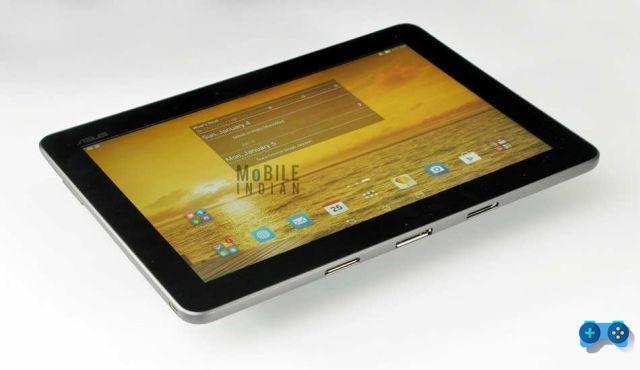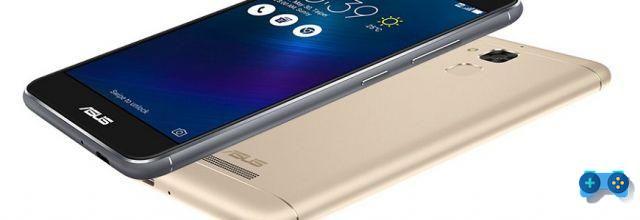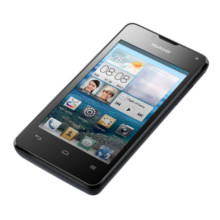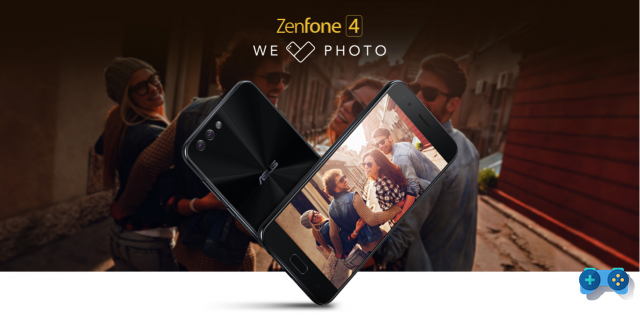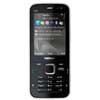
Tested the Nokia N78
Introduction
The world of mobile telephony is increasingly dominated by ultra-technological mobile phones, equipped with large touchscreen screens, cameras with several megapixels and able to perform operations that only computers up to a few years ago were able to perform: internet browsing, processing of spreadsheets or text, e-mail management, games and so on and so forth; in short, real small multimedia computers. In the sea of functionality, however, one, the most important, seems to have taken a back seat, the telephone one. The iPhone, for example, the cell phone that more than others in recent months is attracting the attention of the media and users, suffers from its most serious shortcomings in terms of telephone: inadequate reception, lack of some important features etc.
Nokia, after a moment of disarray (many still have in mind the painful reception of the N80) seems to have returned to doing what it does best, namely phones that first of all allow us to do what they were invented for and that is to call.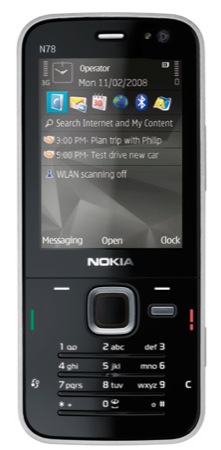
The N78 is one of these phones, which certainly does not neglect the technological and multimedia aspects but which, as we will see during this test, despite some particularly annoying defects, is absolutely perfect from a telephone point of view.
layout
The Nokia N78 is a classic candybar phone Dual mode WCDMA 900/2100 (HSDPA), GSM / GPRS / EGPRS quad band, equipped with a particularly bright 240 × 320 screen with 16 million colors and a wide 160 ° viewing angle with ambient lighting detector, to optimize display brightness and energy consumption.
The phone is also equipped with a dual camera, the main 3.2 MegaPixel, equipped with 20X digital zoom, flash and Zeiss optics while the secondary, used for video calls, is a vga. 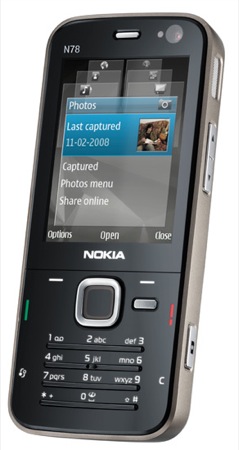
The layout is very similar to that of the previous N72 as well as its dimensions which remain quite generous: Length: 113 mm, Width: 49 mm, Thickness (max): 15,1mm, the weight is 101.8 g.
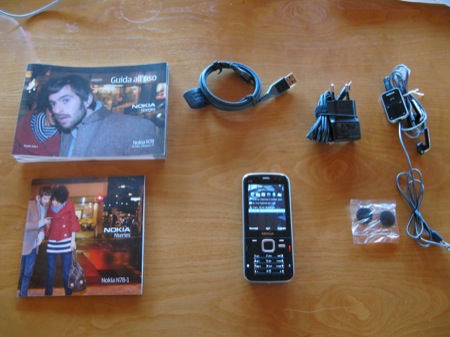
Unlike its predecessor, however, this Nokia is equipped with an A-GPS navigation system and the Nokia Navi, the touch wheel that equips some of the latest mobile phones of the Finnish company. Obviously there is no lack of USB 2.0 and Bluetooth 1.2 connections
The design of the N78 incorporates the family feeling of the new Nokia N series, then translucent black plastics with backlighting and aluminum inserts.
The search for a particular design has made the N78 a particularly uncomfortable cell phone to use. The numeric keypad to start is made up of four very thin plastic bars all placed close to each other. Being able to use it without pressing another button, even for those who do not have particularly large fingers, is not an easy task. The other buttons, the one for answer and end call, the one for the menu, the cancellation and the two for confirmation, are made of a single piece of pressure-sensitive plastic in 6 points arranged along the perimeter, which frames the keypad. This solution too proved to be particularly inconvenient: for example the left corner that corresponds to the customized functions on the screen, is placed too close to the call button, as well as the closing one is too close to the one for accessing the multimedia functions and in both cases it can lead to a typing error.
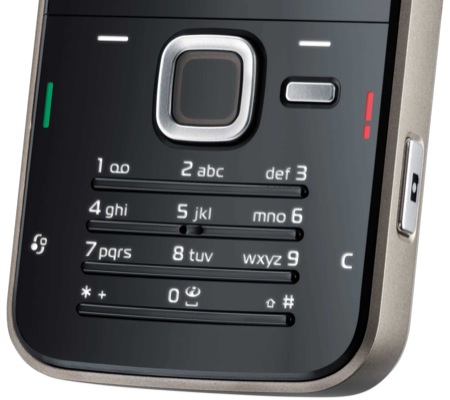
The presence of the Nokia Navi also does not make things easier when browsing the menus; for example, using the analog pad while scrolling the phone book to select the recipient of a message, the system detects a touch rather than a pressure, making you select a number instead of another.
Even the assembly of the plastics does not seem to be particularly accurate, creaks are frequent both in the front and in the back, perhaps also favored by the particularly hard translucent plastics.
Software
The N78 is equipped with Symbian 9.1 - Series 60 3rd Edition FP2 operating system and is equipped with an internal memory of 70mb expandable with MicroSD / T-Flash. The package includes a 2gb card to store music and movies and use the mobile phone as a real music player (supports MP3 / AAC / WMA, FM Radio + Visual Radio), this use is made even easier by the presence of a standard 3.5mm headphone jack connector. The stereo speakers are particularly powerful and deliver crystal clear sound even at maximum volume.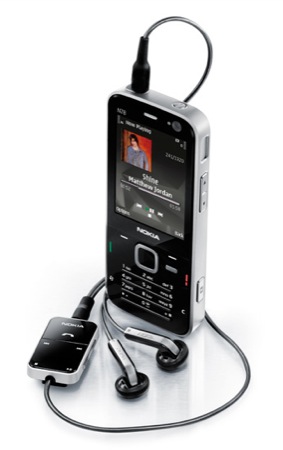
Of course, among the features already included, as in any self-respecting multimedia computer, there are the classic T9 predictive writing software, SMS, MMS, E-mail, calculator, clock, address book, support for Java applications and an integrated modem for connection PC. The mobile phone also has Pictbridge functionality for sending images taken with the camera directly to a bluetooth printer without going through the computer.
Thanks to the integrated A-GPS system, it is possible not only to use the Nokia Maps satellite navigation software, but also to geolocate the photos in order to have information on the place where they were taken.
The management of the menu is not particularly responsive and we can say rather slow when trying to access the multimedia gallery or the camera, this is probably due to the presence of some transition effects that are very beautiful aesthetically but that weigh down the work of the phone making the all in some cases particularly frustrating.
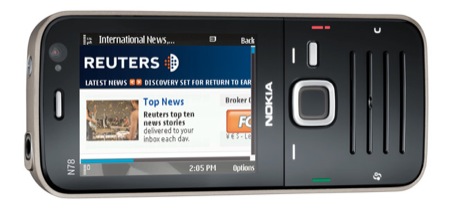
The navigation software is sufficiently accurate only when you are outdoors but certainly you cannot expect the accuracy of dedicated navigation devices or that achievable with external GPS antennas.
Reception camera and autonomy.
The 3.2 mpx camera with Zeiss Tessar lenses with 2.8 / 4.6 aperture behaves quite well both in broad daylight and at night thanks to the particularly powerful flash. The presence on the right side of the mobile phone of a dedicated button for accessing the camera is certainly convenient, but unfortunately, as we said before, the particular slowness of the software nullifies this convenience and the possibility of taking a photo "on the fly". 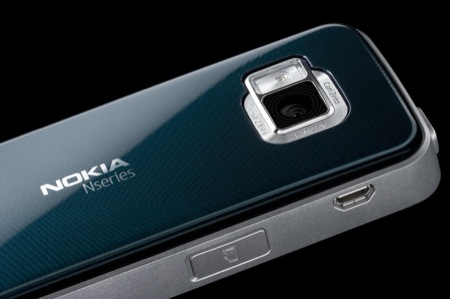
The video function allows you to shoot digitally stabilized video in VGA at 15 fps and with AAC stereo audio up to 48kHz. The maximum length of each clip is 60 minutes.
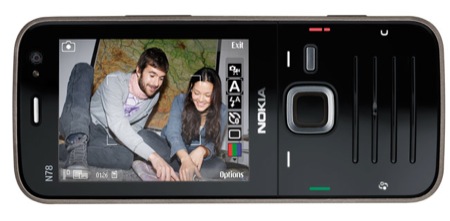
As mentioned at the beginning of this article, certainly the most important advantage of the N78 is reception. The N78 takes you practically anywhere: in tunnels, in the countryside, in the mountains, wherever you are even with a particularly weak signal, your mobile will always allow you to make a call. The audio is always clear and crystal clear and once connected to your operator's network it will be difficult for the phone to lose it. The N78 is in fact equipped with the same communication board that equips the 95gb N8, in the opinion of those who still write the best mobile phone ever made by the Finnish manufacturer.
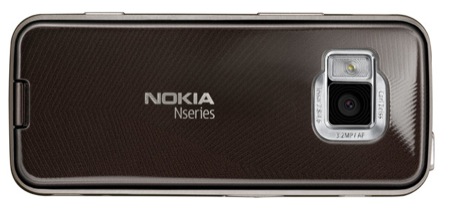
The other great advantage of the N78 is its autonomy: equipped with a BL-6F lithium battery, the Nokia N78 while possessing all the multimedia functions of the most advanced smartphones, Wifi, GPS, large and bright screen, symbian operating system , enjoys an incredible autonomy. Using the mobile phone intensively, mainly in GSM, it is possible to reach up to 5 uninterrupted days of real autonomy, an absolutely appreciable value when compared to that of other smartphones with similar characteristics (The declared autonomy is in conversation of 190 minutes on WCDMA, 260 minutes on GSM while in stand-by: up to 320 hours on WCDMA, 320 hours on GSM)
Conclusions and final judgment
The Nokia N78 is a smartphone that makes reception and autonomy its strong points, the latter element not to be underestimated in a market increasingly conditioned by the "smoke" of a thousand multimedia features and the lack of attention paid to the truly essential aspects. The mobile phone must first of all allow you to make good calls, everything else is optional. However, even the Nokia N78 was born as a smartphone and proof of this is the price (350 euros) and the tide of features it has, not least the integrated A-GPS module.
Precisely on some of these aspects the N78 seems to have taken steps backwards compared to the N72: the slowness of the software and the lack of practicality of the keyboard design are defects that cannot go unnoticed and that make the price of the device unjustifiable. too high even compared to other products offered by the same Finnish company.
Deprecated: Automatic conversion of false to array is deprecated in /home/soultricks.com/htdocs/php/post.php on line 606




